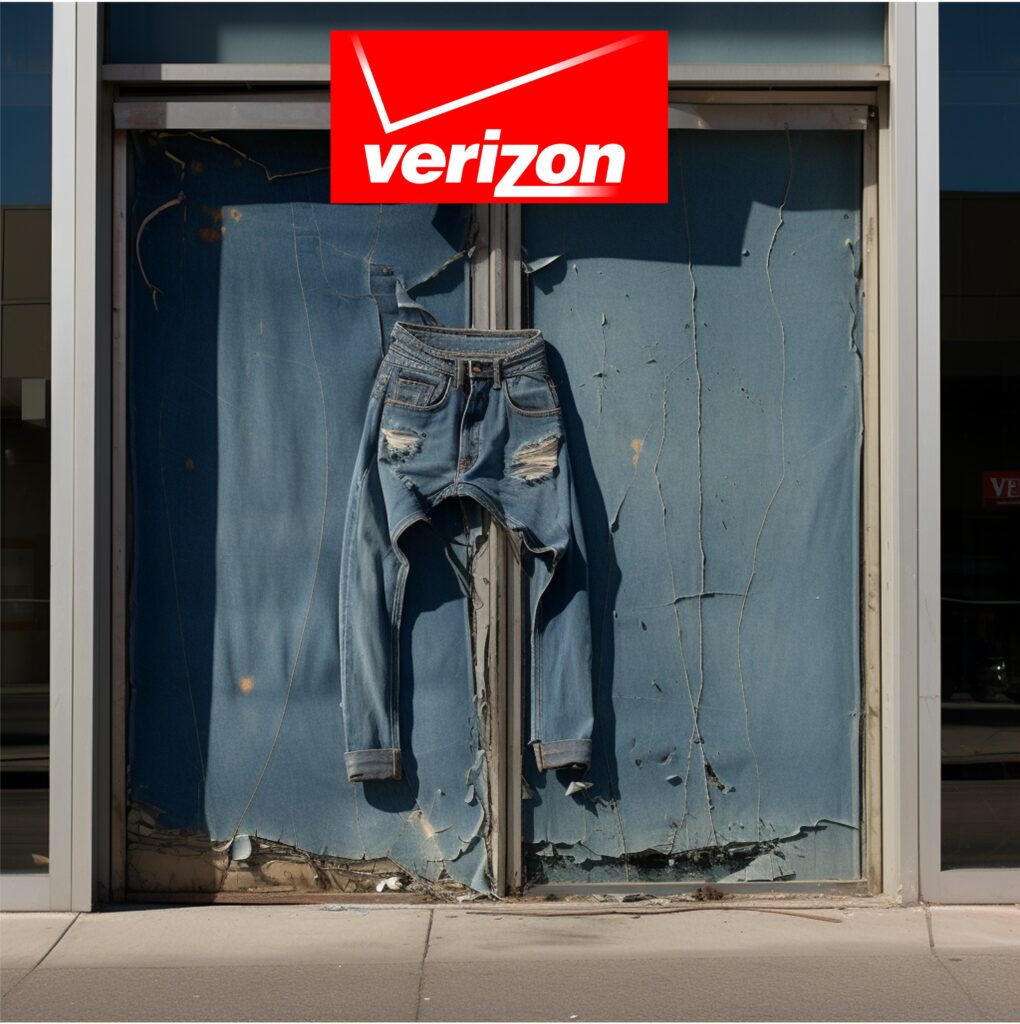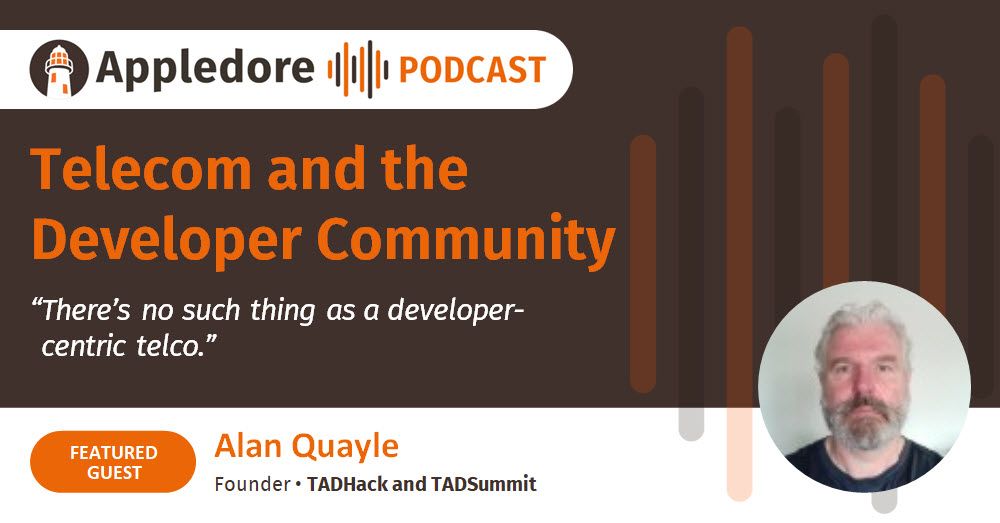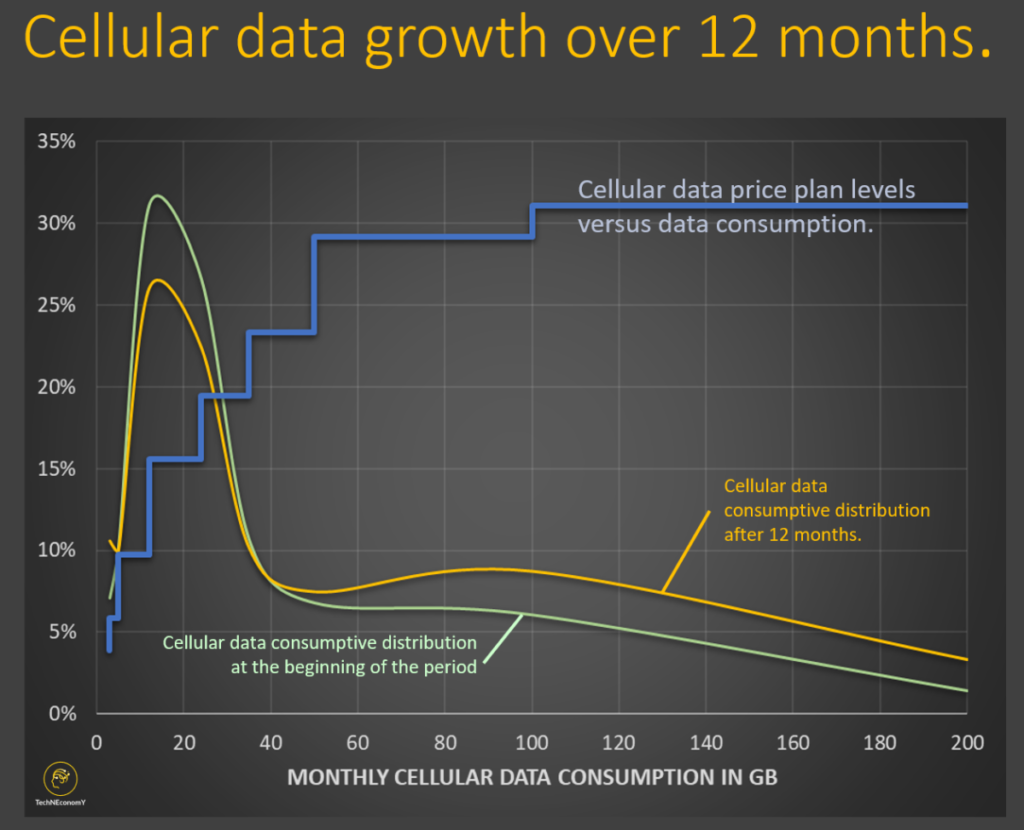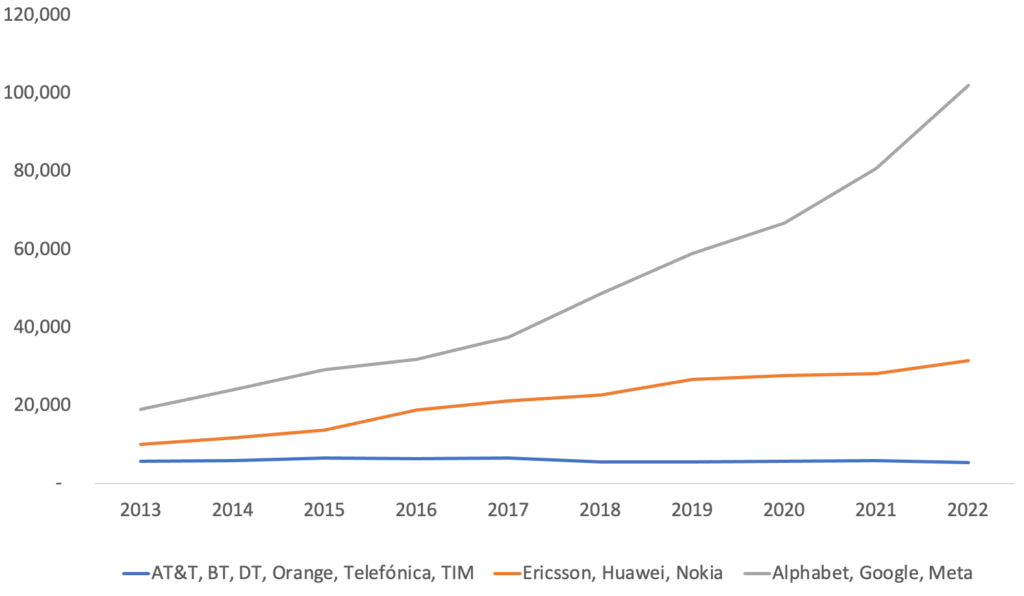The purpose of this CXTech Week 33 2023 newsletter is to highlight, with commentary, some of the news stories in CXTech this week. What is CXTech? The C stands for Connectivity, Communications, Collaboration, Conversation, Customer; X for Experience because that’s what matters; and Tech because the focus is enablers.
You can sign up here to receive the CXTech News and Analysis by email or by my Substack. Please forward this on if you think someone should join the list. And please let me know any CXTech news I should include.
Covered this week:
- Verizon Closes Down Bluejeans
- Appledore Podcast: Telecom and the Developer Community
- TADHack Global Developer Resources
- LIARS AND SCAMMERS
- Aussie SPAM
- Jambonz Keynote Added to TADSummit Agenda
- Airtel exploring offering CPaaS overseas
- Blocking SMS with URLs
- Cellular Data Pricing, Revenue
- Orange quits Silicon Valley
- People, Gossip, and Frivolous Stuff
Verizon Closes Down Bluejeans

We covered the acquisition in CXTech Week 21 2020. I pointed out the silliness of some of the claims:
“Verizon Business bought BlueJeans to beef up its business group as it rolls out 5G and targets new wireless applications at its business customers. BlueJeans’ cloud-based video service being folded into Verizon Business’ unified communications portfolio and “deeply integrated” into its 5G roadmap.”
Verizon
Its conferencing / collaboration, it works over WiFi and 4G today. There is no need, nor ever will be, for a deep integration into 5G. Businesses DO NOT WANT deep integration into 5G, because they just want the service to work regardless.
WFH has propelled the importance of conferencing / collaboration. Most of it is over fixed broadband not mobile. To make money Verizon needs to own the conferencing / collaboration technology rather than resell it. That sums up the rationale for buying Bluejeans back in 2020.
Bluejeans fell behind Zoom, MIcrosoft Teams, and many other services. This resulted in Bluejeans being closed down. Another telco acquisition laid to rest.
Appledore Podcast: Telecom and the Developer Community

Check out my Appledore Research podcast with Robert Curran and Francis Haysom on “Telecom and the Developer Community.”
Check out TADHack on 21/22 Oct tadhack.com and get involved, you do not need to be a coder, just interested in technology. Sponsored by stacuity, STROLID, Inc – Strong Process. Solid Results., Radisys Corporation, jambonz.
Also check out TADSummit.com, 19-20 Oct, the thought leadership event in programmable telecoms with a no BS agenda. Sponsored by TelecomsXChange (TCXC), Unifonic, SIPhub, STROLID, Inc – Strong Process. Solid Results., jambonz, stacuity.
Remember a developer-centric telco is an oxymoron, though there are always exceptions like Ideamart, Dialog Axiata PLC, hSenid Mobile Solutions (Pvt) Ltd.
Partnering is the answer as many markets are moving too fast for telcos. Standards are a telco perversity, it makes telcos slow and unresponsive to customers’ needs.
And a point I did not raise is open source telecom software, a core theme for TADSummit. Open source software is one of the keys to the success for programmable telecoms, NOT the public cloud. It’s the adoption of open source software that happens to be written for the cloud (public, private, hybrid – data sovereignty matters). The CAMARA clan are being misled!
We need more Truth in Telecoms!
Check out the dev resources for TADHack Global, 21-22 October 2023
It’s over 2 months to TADHack Global 21-22 Oct, however, I recommend you have a look at the developer resources now. Either on the landing page or your preferred location page we have a Developer Resources section, just click on the logo for the resources you seek. This year Stacuity will be sending their SIMs to developers around the world. You need the SIMs to use Stacuity’s resources.
The sooner you sign up for the Stacuity SIMs the more likely you are to receive them before the event. You know the usual problems, SIMs gets sent, you wait 2 weeks and nothing arrives, you wait a little longer then ask for another. When the replacement SIMs arrive over one month has passed. Hence why were asking people to look at the developer resources earlier than normal this year.
Register for TADHack to win some of the cash prizes for your hack here: https://tadhack.com/2023/
Thanks to sponsors jambonz, Radisys Corporation, STROLID, Inc – Strong Process. Solid Results., and stacuity
LIARS AND SCAMMERS
Numeracle BLASTS Carriers and Analytics Engines For Falsely Labeling Calls and then Profiting Off of “Remediation” in New FCC Filing.
Numeracle lays it all out in a 40 page FCC comment. As the comment explains the companies driving the labeling have no incentive to be accurate:
“Their incentive structure defaults to overblocking and overlabeling as there are currently no downsides to being overzealous in that regard because they are accountable only to their carrier partners.”
Numeracle
As Numeracle points out the carriers have simply been LYING about these issues for years:
- The major wireless carriers and their Analytic Engine partners claim extremely high accuracy rates about their blocking and labeling decisions. In 2021, AT&T claimed a false positive rate for labeling and blocking of less than one hundredth of one percent. “Call originators who have calls that are blocked or labeled can use the same web portal to submit a request for redress at no charge. Based on user reports for March, less than one hundredth of one percent of calls are false positives.”
- T-Mobile’s partner First Orion states that for blocking and labeling “[o]ur current error rate based on reported false positives is a fraction of 1% of all calls we analyze.”
- Verizon states that its false positive rate for blocking and labeling is “extremely low” and states that “[l]ess than 0.2% of originating numbers identified as high risk robocalls are reported as having been incorrectly blocked.”
- None of these data points are credible given that the data on false positives relies on “user reports,” “reported false positives, ” and “reported” errors
Here’s another example:
- One AE imposes outrageous charges on callers that go to it directly for monitoring and remediation and do not use a company such as Numeracle as an intermediary. In at least one case, this AE charged more than $40,000 per year to register, monitor, and remediate spam labels for a caller with 100 phone numbers. In exchange for paying that AE $40,000, the AE removes most spam labels (the labeling designation for an unwanted call) but not scam labels (the labeling designation for a fraudulent call). And this is to remove the spam labels that the AE itself imposes. “Pay me $40,000 and I’ll remove the spam labels I’ve created” is the essence of this contract reduced to its core.
A better alternative exists:
- A better alternative exists—specifically expanding on the “Know Your Customer” requirements and STIR/SHAKEN technology along with the Rich Call Data10 standard developed by ATIS to ensure that the customer’s verified identity is embedded in the call signaling and delivering that information without interference to call recipients, who can make their own decisions about whether the phone should ring, be diverted to voicemail, or blocked.
- Callers willing to undergo rigorous KYC vetting whose calls are signed with STIR/SHAKEN and who embed their identity in the call signaling should be informed if their calls are labeled. And if a caller using this technology violates the law, the information embedded in the call signaling will lead enforcement agencies straight to their door to stop it.
And if this reminds you of TCR, your not far off!

Aussie SPAM
According to the Australian Communications and Media Authority (ACMA). An ACMA investigation found that 103,146 non-compliant messages were sent using Infobip’s services, including scam texts that impersonated some of Australia’s best-known collectors of road tolls. Sinch also received criticism for allowing 14,291 non-complaint texts to be sent, including scam messages designed to appear as if they came from Australia’s Medicare program and from its postal service.
Infobip and Sinch were each issued with a formal ‘direction to comply’, which is effectively an order to do what they should have been doing anyway. Neither business was fined but the implication is that they may be fined if they do not remedy their failings.
The dirty little secret on robocalling and SMS SPAM is the ecosystem is not that motivated to stop it. The regulator slaps some wrists, and rarely imposes a fine that it usually doesn’t collect. The country thinks the regulatory system is working, while SPAM / robocalling continue to earn the carriers and the aggregators tens to hundreds of millions.
Infobip and Sinch provide services to other aggregators, and those aggregators have customers who could be spammers. If you accept marketing SMS, you’re going to see SPAM. And even if you restrict traffic to 2FA and alerts, notifications and reminders, where customer opt-in is explicitly obtained before sending the SMS. Marketing / SPAM still comes through, the most scrupulously clean SMS aggregator will still see spam.
The approach of email has spam mostly solved, your email provider as a SPAM folder or simply marks SPAM emails. The equivalent of the email provider for SMS is your carrier, why are they not protecting their customers like email providers? Regulators should expect more from the telcos, and there’s an existence proof with email that more or less works. We all pay our telcos for SMS service, aggregators pay telcos to deliver A2P SMS, why are telcos not be held responsible? Both sides are paying for a service yet the telcos are not held responsible. KYC, Know Your Customer; rather than “It’s them not me.”

Jambonz Keynote Added to TADSummit Agenda
I’m really looking forward to this keynote, Jambonz knocks the socks of much proprietary ‘CPaaS’ software. The $100B figure is a nonsense made-up number, hence why Dave uses it. Twilio’s revenues are flat in the next quarter and they the elephant in the CPaaS room at $4B, so where’s the other 96% of the market!
How the open source project Jambonz is disrupting CPaaS. Plus – these are the mistakes I’ve made.
Dave Horton, Creator of open source projects Drachtio.org and Jambonz.org
- Jambonz is an open source CPaaS.
- With Jambonz you no longer need to use Twilio, Sinch, Telnyx, etc.
- Jambonz and it’s community are disrupting a $100B market!
- Open source is hard, I’ve made loads of stupid mistakes.
- I’ll share some funny, painful, and down right stupid mistakes. The learning is invaluable, perhaps worth $100B!

Airtel exploring offering CPaaS overseas
We follow Airtel’s work in programmable communications. In 2021 we ran a session on Airtel IQ at TADSummit by Ankit Goel, VP & Head Engineering – Digital Enterprise Business at airtel X Labs and Ishan Bansal, Engineering at airtel X Labs.
The title mentions CPaaS, but they’re selling enterprise communication services, not APIs, like omni-channel messaging (Airtel IQ Reach), contact center, etc. This is an interesting phase in the development of enterprise services. The innovation groups (Airtel X Labs) are building services on open source, and selling with partners outside the home markets.
We’ll be covering this at TADSummit, as well as how the wholesale groups in telcos are doing something similar, enabling partners in other countries to get access to India. For example, an Indian telco enabling an Indonesian marketing firm to get direct access to the Indian market for SMS through programmable wholesale. Ameed Jamous of TelecomsXchange will talk more about this in his TADSummit keynote.
Blocking SMS with URLs
Paul Walsh recently posted on LinkedIn that Maxis, Celcom, Digi and U-Mobile started blocking the ability to send or receive URLs through SMS messages from May 2023. Japan does a similar thing. Though SMS plays a far less significant role in Japan thanks to LINE.
“This block will include SMS that ask for personal particulars such as a person’s name as well as their identity card number, bank account or other contact details.”
MetaCert killed Phishing on Slack for the entire crypto world in 2017 – they’re about to do that for mobile operators with a different/better approach to Internet. Its based on Zero Trust.
Cellular Data Pricing, Revenue
Great piece of analysis from Dr Kim Kyllesbech Larsen. You do need to read from start to finish, and it brings up the impact of QUIC on the experience most customers receive. I think adding WiFi into the mix also impacts consumptive growth. When my son and I get the occasional 80% warning, we make sure WiFi is on, well at least I do. Hence mobile broadband usage drops for the last few days of the month. We’ve not changed our data plans for years.

Orange quits Silicon Valley
In the Appledore podcast I stated in 5 years time telcos will remain state granted oligopolies raising prices to grow revenues, as mentioned in CXTech Week 31 2023 see Mike Dano’s article, “The latest 5G innovation: Even more price increases”. The lack of investment in R&D, see diagram below, shows telcos are not investing in their future.
Orange has for more than 20 years maintained a small office named Orange Silicon Valley (OSV), it has employed 28 people and given the French telco a view of what was happening. Many other telcos have done so, though often the job was seen as an extended Californian vacation interrupted by meeting people and writing reports.
I met with the OSV folks there many times over the years. They did make some investments, though convincing the Orange HQ folks that partnering with a taxi app called Uber, or yet another IM app called WhatsApp was by far the hardest part of their job. I found some of their analysis on what was happening clouded by the BABA (Bay Area BS). However, I remember I saw my first experience of mobile game advertising, and that convinced the days of paid for mobile games were numbered. I also experience my first look at Twitter there, it just seemed like SMS for newsgroups. It wasn’t until I experienced the laptop experience that it made sense, but the the signal to noise ratio seemed high.
Today the Bay Area plays less of a role in innovation, it’s a distributed thanks to the internet. Within a telco making the monitoring function more distributed makes more sense, and bringing in more people with both technical and business experience, to filter some of the BABS can help. However, the R&D gap remains, and telcos are being misled by their vendors on CAMARA.

People, Gossip, and Frivolous Stuff
David Ferry is now Senior Software Engineer at Kami. I’ve known David for over a decade, and of OpenCloud for over 2 decades, since they were looking to break into the UK market, they began in New Zealand.
Gerry Christensen is now Head of Partnership Development and Regulatory Affairs at Caller ID Reputation® I’ve known Gerry since his Mind Commerce days.
Kevin Kleinsmith is now VP, OSP Engineering at Rise Broadband.
Omar Paul is now Senior Vice President Product and Engineering at Mambu.
You can sign up here to receive the CXTech News and Analysis by email or by my Substack.
Pingback: TADSummit Podcast Episode 3a & 3b - Blog @ Telecom Application Developer Summit (TADS)